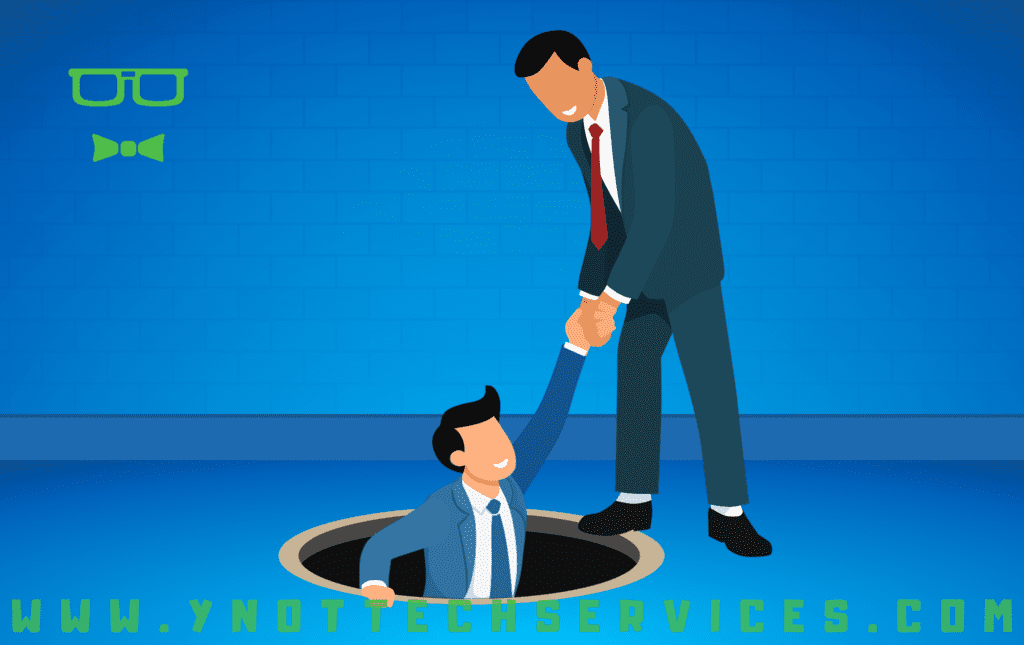 Disaster Recovery vs. Business Continuity: What’s the Difference and Why You Need Both
Disaster Recovery vs. Business Continuity: What’s the Difference and Why You Need Both
When running a business, it’s easy to focus on the day-to-day operations and not think about what would happen if some thing went wrong. But disasters, whether natural, technical, or human-made, can strike at any time. This is where disaster recovery and business continuity come in. These two terms are often used interchangeably, but they serve different purposes. Let’s break them down.
Disaster Recovery: Getting Back on Your Feet
What is Disaster Recovery?
Disaster recovery is all about getting your business back up and running after some thing bad happens, whether it’s a server crash, flood, or even a cybersecurity breach. It’s the plan for restoring lost data, fixing broken systems, and returning operations to normal as quickly as possible.
What to Consider for a Disaster Recovery Plan
- Data backups. How often are backups made? Where are they stored? Are they easily accessible if your primary systems go down?
- Technology recovery time. How long will it take to restore your technology infrastructure? This includes everything from servers to applications.
- Who’s responsible? Who in your company will take the lead on restoring systems? You need a clear chain of command.
- Testing the plan. Having a plan is great, but testing it regularly to make sure it works is essential. You don’t want your first use of it to be during a real disaster.
Business Continuity: Keeping the Lights On
What is Business Continuity?
While disaster recovery is focused on getting things back to normal, business continuity is about keeping things running when something goes wrong. A business continuity plan (BCP) outlines how your business will continue to operate during and after a crisis, minimizing downtime.
What to Consider for a Business Continuity Plan
- Critical business functions. Identify what parts of your business need to stay up and running no matter what. This could be customer service, manufacturing, or even payment processing.
- Alternative work locations. If your office is inaccessible, can your employees work remotely? Are there alternative locations where work can continue?
- Communication plans. How will you communicate with staff, clients, and suppliers during an emergency? Make sure you have a system in place for keeping everyone informed.
- Customer access. If your customers can’t reach you, you could lose business. Think about how you’ll continue serving them, even if your systems are down.
Why You Need Both Plans
You might be thinking, “Do I really need both disaster recovery and business continuity plans?” The answer is yes.
Disaster Recovery Without Business Continuity
If you have a disaster recovery plan only, you may be able to restore your systems, but what happens to your business while you’re working on that? Without a business continuity plan, your operations could grind to a halt, and by the time your systems are back online, your customers could have gone elsewhere.
Business Continuity Without Disaster Recovery
On the flip side, having a business continuity plan without a disaster recovery strategy might keep the lights on temporarily, but if your systems aren’t restored quickly, the short-term fix won’t hold up. You need both to keep your business going while also ensuring that everything returns to normal.
The Risks of Not Having These Plans
It’s tempting to think, “This probably won’t happen to me,” but the risks of not having these plans are too big to ignore.
- Lost revenue. Downtime means lost business. Every minute your systems are down, you’re missing out on sales, customers, and productivity.
- Damaged reputation. If customers can’t reach you, or you can’t deliver your services, they’ll likely lose trust. This can have long-term effects on your reputation.
- Legal and compliance issues. Depending on your industry, not having a plan could result in legal consequences, especially if customer data is compromised.
- Employee morale. When a crisis hits and there’s no clear plan, it can leave your employees confused, stressed, and unsure of what to do.
Let Us Help You Prepare
At the end of the day, you don’t want to leave your business’s future to chance. Creating and maintaining both a disaster recovery and a business continuity plan takes time and expertise, which is where we come in.
As a managed service provider, we specialize in helping businesses such as yours prepare for the unexpected. We’ll work with you to create custom plans that fit your unique needs, ensuring that you’re not only ready to bounce back from any disaster but can also keep your business running smoothly in the meantime.
Ready to protect your business? – Contact us today to book an appointment and get started on building your disaster recovery and business continuity plans.



